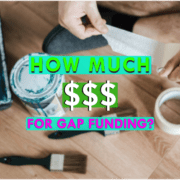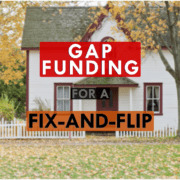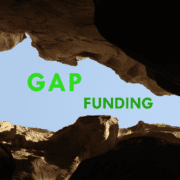What To Do When Your Flip Is Stuck on the Market
It’s all too common in times like these – your flip is stuck on the market. Here are your options to save your money.
You got a great deal on a property a couple months ago. You worked hard to fix up the house fast. And now… it’s not selling.
This problem is happening to investors daily. We’re getting a lot of calls from our clients (and other people’s clients!) asking for help.
So, what do you do with a sticky flip?
Your Options When Your Flip Is Stuck on the Market
Obviously, the ideal goal with a flip is to sell at a profit, quickly. That may not be possible under current conditions. If your flip is stuck on the market, you might need to strategize a different exit plan.
Your main options are to:
- Keep dropping the price until it sells. Cut your losses and just get rid of the property.
- Refinance your flip’s loan. Make your lender happy, but keep the house on the market to try to salvage some profit.
- Convert the flip into a rental. Refinance your flip, then hold onto the property for a couple more years, until a good market returns. You can keep a tenant and get some rent income in the meantime.
Which option is right for you? That depends on your goals, willingness to rent, and financial situation. Let’s go over some of these options in detail to help you decide.
First Step in Converting a Flip to a Rental
First of all, if you decide you’d rather turn the flip into a rental, stop lowering the market price immediately.
You can’t drag out this decision, lowering the price “just in case” while exploring rental options.
When you refinance your fix-and-flip, the appraiser looks at the market history. They see the last price the house was listed for. They have to base their appraisal off that number, regardless of whether the house sold or not.
If the last listed price is lower than what they would have appraised the house for… they still have to go with the listed number.
So every time you drop the price, it lowers your potential appraisal. This directly hurts your loan-to-value on a refinance.
Loan Options for Your Flip Stuck on the Market
Once you’ve made the (quick) decision to refinance the property, what are your options?
Typically, you’d go to a bank to get a conforming or traditional loan. But banks are slow, and this refinance needs to happen quickly. Also, with money tightening, bank loans are harder to get than ever.
Here are 3 other options we’d steer you toward:
1. DSCR Loans
The DSCR loan is the easiest, fastest way to get a longer-term rental loan. The core requirements for most DSCR loans are:
- A good credit score – 680 minimum, with a higher score meaning the better the rates and terms.
- Rent income – If your rent covers your monthly payments on the loan transaction, you’ll qualify. Some DSCR products will still take you if you lose up to 25% on the loan payment with rent.
If you decide you want to turn your flip into a rental, a DSCR loan should be the first option you consider.
Beware the Prepayment Penalty
All DSCR loans have a prepayment penalty. The standard timeframe is 3 or 5 years. The longer the term for your prepayment penalty, the better the rate.
Prepay penalties are like exit fees. For example, if your term is 5 years, and you decide to pay off the loan during year 3, they’ll charge you 3% of the loan as an exit fee.
2. Bridge Loans
If your flip is stuck on the market, but you want a short-term refinance, then bridge loans could be the better option.
Bridge loans typically last about 1 to 2 years. There are a couple directions you could go with a loan like this:
- You can keep the house on the market and just use the bridge loan to get out of your original flip loan.
- You can convert it to a short-term rental (think Airbnb) to bring in some cash flow.
- You can turn it into a traditional rental while you wait out the market.
Bridge loans are good because they’re fast, interest-only, and have no prepay penalty. The downside of bridge loans is that they’re limited to 70% of the value of the home. Plus, they tend to have higher interest rates.
If your flip is stuck on the market for too long, your original lender will start asking for their money back – potentially raising rates or threatening foreclosure. A bridge loan is a great exit.
DSCR vs Bridge Loan to Refinance Out of a Fix-and-Flip
When deciding whether to go with a DSCR loan or bridge loan, you should consider the “tipping point.” Bridge loans have 2% – 4% higher annual rates. DSCR loans have a prepayment penalty.
Depending on how long you want to keep the loan on the house decides which type of loan will be cheaper for you. This tipping point usually lies somewhere between the 14th and 17th month of a DSCR loan. That’s when the pre-pay fee becomes cheaper than the rates on the bridge loan.
3. Real OPM
Lastly, real OPM is always the ideal funding source to get you out of difficult situations.
Real OPM is real people – family, friends, folks in local real estate groups – who want to put their money in a safe place with an easy return.
An OPM lender can get a 6% to 7% rate of return lending to you over a 2% or 3% rate keeping their money in a bank. You can use OPM to pay back your original lender and free you up to make the best decision for your flip stuck on the market.
OPM is win-win.
More Help for a Flip Stuck on the Market
We’d be glad to help you find the best loan for your needs.
Reach out now! Rates are only going to rise, and now is the perfect time to get prepared for a market with more opportunities.
Email us at Mike@HardMoneyMike.com.
Happy Investing.






